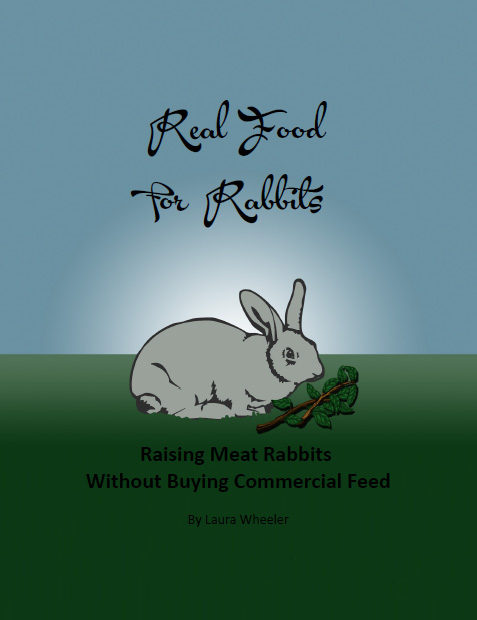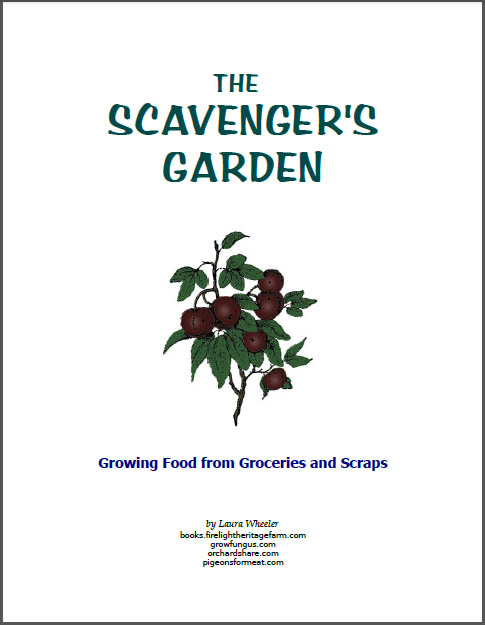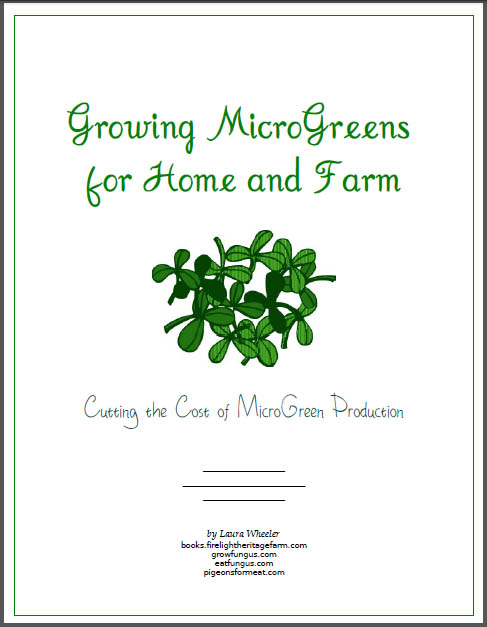 Click to Download Your Free Heritage Pickling and Culturing e-Book Now!
Click to Download Your Free Heritage Pickling and Culturing e-Book Now!
Instant Download, NO Registration Required!
But Heritage Chicken is Too Tough!!
We no longer know what chicken tastes like, or how to cook it - Julia Child commented with disgust on the beginnings of the current "broiler chicken" development, flinging the chicken aside with disdain.
What we are calling "chicken" isn't at all what chicken was even 60 years ago. In the last 6 decades, chicken meat that is sold commercially has become more and more bloated, and is referred to in Holland as "Plofkip" which translates as "exploded chicken". So named because of how fast it grows. A chicken that grows so fast that the internal organs and bone structure cannot keep up with the growth of the muscle. Left to grow without careful feed restriction, or REQUIREMENT to move around to get sufficient feed, these chickens will stuff themselves at the feed tray all day long, and die by the age of 8-11 WEEKS of age, because their hearts give out under the strain. They fall over from weakness in their legs, and the mortality rate for them is far higher even just out of the egg.
Words regarding raising chickens now mean different things. They've been subverted. You can't even talk about raising chickens and have anyone understand that there are any other KINDS to raise except Cornish X if you are producing meat!
So our backyard chicken raisers, and many wannabe small farmers, decide that there MUST be a market for Heritage meat chicken, since there is a market for everything else non-industrialized in the farming world. They order a bunch of Heritage "meat" chickens (which are all actually dual purpose birds with an emphasis on meat over egg production), and they read up on raising "broiler" chickens (which is another word now for "Cornish X" and all their close relatives, which are just, when all is said and done, Plofkip), and set to raising their Heritage chickens.
Well, the chickens are doing their thing, growing normally and naturally, and the farmers are looking at them thinking, "Aren't they supposed to get big enough to EAT sometime soon?". And everybody tells them you have to butcher at 8-10 weeks or they'll get tough and be inedible, so they reluctantly butcher these tiny little things before they are even big enough to be called Fryers. A few wait a little longer, until they think they are big enough, and then they cry, "They were so SMALL, and they were so tough we could not eat them!".
They hear that they need to cook them low and slow, so they toss them into the crock pot until the meat is no longer bleeding, and pull them out and they are chewy and hard to pull from the bones. They do not realize that "low and slow" means LONG, also. Several times longer than you'd normally cook them.
Part of the point is that if you cook it according to historic methods, you don't HAVE tough meat. You have a bird that is tough if you cook it like a younger bird, but which is NOT tough if you cook it according to the method attached to the age of the bird.
- Up to 12 Weeks. Fryers can be quick cooked - they usually have very little fat, so they were cooked in fat. At this age, the chickens are LITTLE. By 12 weeks they are just big enough to get a bit of meat off, bigger than a pigeon, maybe the size of a large bantam chicken. About 1 lbs. But you have nice tender little pieces of fried chicken, which cook all the way through without trouble, and have a full juicy flavor.
- 12 weeks to 5 months. Broilers are cooked a little longer, with a little less intense heat, and meat pulls easily from the bones when done. This is still a SMALL chicken. Generally about 2 lbs. This is a Heritage broiler, not a commercial broiler, don't expect them to be the same.
- 5 to 12 months. Roasters are cooked slowly, at moderate heat, and covered to keep the environment moist - joints should be loose so you can pull them apart when done. You'll get a full sized chicken here, but it will be a NATURAL full size, NOT a bloated exploded chicken size. The breast is still keel shaped, and is not very wide, but this depends somewhat on breed. You will get a chicken somewhere in the neighborhood of 2-4 lbs, still smallish compared to commercial broilers.
- Over 12 months. Stew fowl are cooked IMMERSED in liquid, at low heat, very slowly, for many hours, OR pressure cooked at higher heat (or canned which gives the same result) - meat should fall off the bones when done. Again, you have a full sized chicken, but not a large one. The larger ones will be 3-5 lbs dressed out, and the breast is generally keel shaped, and narrow, except in a few older large breed meat roos (we've seen larger in Red Legs, and Faveroles, and expect this with Jersey Giants and Wyandottes but don't know yet).
Just label the packages correctly, and use them according to what they ARE.
Broiler crosses are treated like an all purpose chicken, so people have forgotten this, and their use of the NAME "Broiler" has further confused the issue. They were named broilers because originally the goal was to raise a broiler chicken in the same time as a fryer. They succeeded, and did not stop. Pretty soon they replaced not only the heritage broilers, but the heritage roasters as well, all accomplished in less than 8 weeks time. Soft flavorless chicken, unnaturally large, and not quite the same nutritionally as heritage chicken either.
The really nice thing about heritage chicken is that they have more flavor. You get chicken that tastes like CHICKEN, without having to inject it with "a solution" to enhance the flavor. The meat is pinker, the fat is yellower. And people say over and over that they taste "better". All it means is that the flavor of chicken in them is intensified.
Another issue with Heritage breeds is that there are "heavies" and there are "egg layers", and when you decide that you want to raise some meat birds, and that they need to be Heritage breeds, you may be entrapped by an offer made by several hatcheries, called the "Fry Pan Special". Now, the Backyard Barbeque Special is a DIFFERENT thing than the Fry Pan Special, though they sound like different names for the same thing, they are NOT. Go look at that handy little list above, and you'll begin to understand how clever wording, drawing on OLD classifications, by the Fry Pan Special purveyors, is selling you something different! Something smaller.
Look at the wording carefully. One just says it will supply you with a large number of baby roosters for a very small amount. The other says they will supply you with a large number of baby roosters, selected from heavy breeds, for a very small price. The second one is the BETTER DEAL in the long run (though they both cost about the same). But you still won't get growth like cornish cross, you will just get a little larger birds if you grow them longer than 12 weeks.
We have found that the FASTEST growing Heritage breeds aren't actually the large breeds, but they aren't the layer breeds either. They are the "fast maturing" breeds - there are a few of those that are not bred to be heavy, but to produce eggs early. Our Fayoumi roosters were about a third larger than our Wyandotte roosters at 12 weeks. Faster maturing breeds start producing Testosterone earlier, so they grow faster in the first few months of life after they start producing testosterone. The down side is that they tend to be SMALLER breeds overall, because they also STOP GROWING much sooner. But during those first 4 months, they put on more weight faster than most heavy breeds.
(Unfortunately, our Fayoumi roos also ended up being so randy and harsh on the hens that we had to dispatch them. We just could not have those two little teenagers who just discovered what was in their pants, abusing our hens! High testosterone may have its down side!)
So how do you raise Heritage Breeds in a sustainable manner? You do it how the old timers did it.
What you DON'T do, is buy new hens every year and butcher them as soon as they molt! You don't butcher your hens when they reach a year and a half old! Contrary to popular myth (another industrialized ag rule that does not apply to backyard chickens!), third year hens are NOT poor layers! Third year hens are generally very good layers, with little difference between the second and third year.
Older hens make the best broodies. If you select for that - butcher the hens that have not gone broody in their third year, or fourth year - and encourage hens and breeds that DO go broody as they get older, you can let them brood the eggs, and get all the new chicks you need to keep your flocks going. Beats tending an incubator and then having to have stinky chicks in your house for weeks. Contrary to another popular myth, chickens DO make better chicken mamas than people! Chicks raised by the mama tend to be healthier, and better foragers.
Each clutch of eggs that hatches will produce little pullets and little roos. Somewhere between 4 and 8 weeks (depending on the breed), the roos will start to grow combs, and the combs will redden up. The combs on the pullets will stay yellow or buff colored, eventually turning to pale pink. By 12 weeks, you should be able to tell all the roos from all the pullets. The combs of the pullets will redden just before they begin to lay, somewhere between 4 and 7 months of age, depending on the breed, and the seasonal conditions.
The little pullets are raised up to eventually replace the older hens, but you can also butcher some of them, if they are taking too long to mature, or if you simply do not need so many. You can also sell them, finished pullets usually sell wherever they are produced. It does not matter if they are "barnyard crosses", if they promise to be good egg layers they should sell well anyway.
The roos are separated out as soon as you can tell that they are roos, and given a higher protein diet to put on more muscle, and they go on to one of three fates:
1. Butchered young. At whatever age you decide they are large enough to be worth the effort for how you are going to use them.
2. Kept for replacement roosters. You won't need more than one or two a year with a small flock, maybe not that. Select these when you are ready to butcher the others, so they have time to grow and show their stuff.
3. Caponize. If you caponize those roosters, they'll stay tender and be able to grow far larger. You'll have the advantages of tenderness and large size, in a slower growing more healthy bird.
4. No, there is no fourth option. Keeping the surplus roos as pets is not an option, they will fight and cost you money, and not return anything. Selling them is an option but you won't get enough to make it worth having sold them - they provide enough meat to justify it, but you can't get more than $5 each for them - no smart farmer considers this to be an option, since losing money is not a rational choice. Giving them away to other people is not rational either - they'll just eat them anyway, unless they really need a rooster, which happens occasionally. But it is still a losing proposition. The only rational choice is to put those roosters on a path to the dinner table, by whichever means you choose, with the rare one getting a detour through the hen yard for a year or two before he is featured as the entree.
Your old hens, and the retired old roos, also contribute to your meat supply. They are the birds you cook down for soup, and good bone broth. They are also excellent for canning, the pressure canning process tenderizes them wonderfully, and you end up with ready to use chicken that is easy to whip out for salads, soups, and casseroles.
Once you learn to use these things properly, raising your chickens becomes a more natural process. Instead of ordering a bunch of Plofkip in the spring, and rushing them through their 8 sad weeks of life, and butchering them all in one exhausting day, you butcher a few here, a few there, according to your needs both in the kitchen and in the coop, in a gentle rhythm of seasons and years.
Heritage chicken isn't just a meal, raising them is a way of life.
NOTE: We also raise rabbits, and they produce on and off all year, so we butcher a few here and a few there, and often butcher a batch of rabbits and follow with a few culled fowl. The combination of the two provides for all of our white meat needs very nicely. We would have to keep about twice the number of chickens that we keep to meet our needs solely with chickens.








